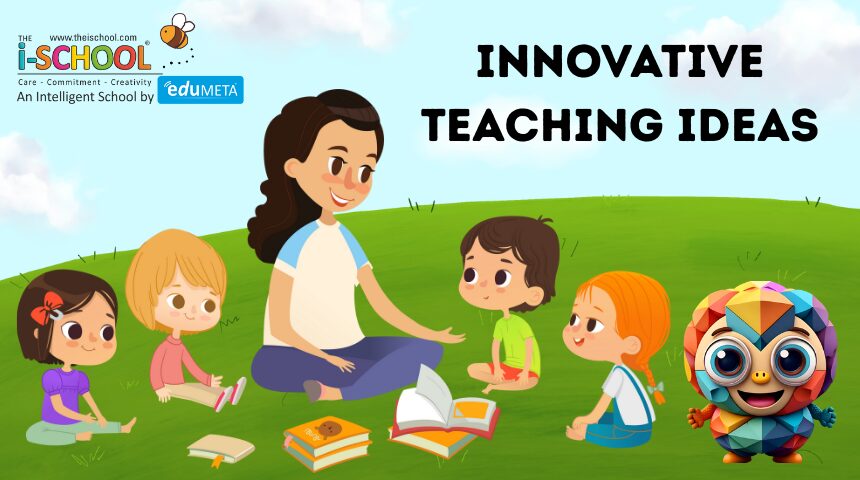Innovative Teaching Ideas Every Play School Teacher Should Try

Early childhood education forms the cornerstone of a child’s lifelong learning journey. The play school environment, therefore, must go beyond traditional methods and embrace innovative, child-centered approaches. By introducing creative teaching ideas, educators can spark curiosity, nurture imagination, and establish a strong foundation for academic and personal growth.
At eduMETA THE i-SCHOOL, we integrate forward-thinking strategies to make learning both engaging and impactful. Below are several innovative teaching practices that every play school teacher should consider implementing:
1. Dynamic Storytelling Corners
Storytelling is a timeless tool, but modern classrooms can transform it into a multisensory experience.
- Incorporating puppetry and role-play encourages active participation.
- Interactive props and mini stages allow children to dramatize narratives.
- Open-ended storytelling promotes critical thinking and creativity.
2. Music and Rhythm as Learning Tools
Music has a profound effect on memory and language development.
Teachers can:
- Use rhythmic patterns to teach numbers, phonics, and days of the week.
- Introduce movement-based songs to enhance motor coordination.
- Integrate instruments for sensory stimulation and collaborative play.
3. Sensory Play and Experiential Learning
Hands-on experiences deepen understanding. Sensory stations with sand, water, playdough, or textured objects encourage children to explore and connect abstract concepts with real-world experiences.
4. Outdoor and Nature-Based Learning
Learning is not confined to four walls. Outdoor activities such as counting leaves, observing insects, or drawing natural elements foster environmental awareness while strengthening observational and analytical skills.
5. Technology-Integrated Engagement
When used responsibly, technology enhances classroom interaction:
- Interactive whiteboards for collaborative drawing and games.
- Age-appropriate educational apps that build phonics and problem-solving skills.
- Guided videos that spark meaningful conversations.
6. Expanding the Scope of Art
Art should be an avenue for free expression. Beyond paper and crayons, teachers can explore:
- Clay modeling and 3D crafts for tactile learning.
- Natural material collages for creativity and sustainability.
- Innovative painting techniques to enhance sensory engagement.
7. Dramatic Play and Role Simulation
Role play helps children understand the world around them. Classroom setups like pretend kitchens, markets, or clinics introduce real-life vocabulary, social skills, and collaborative problem-solving.
8. Positive Reinforcement Strategies
Recognition and encouragement are essential to effective classroom management. Simple methods such as sticker charts, achievement boards, and verbal praise reinforce positive behavior and cultivate self-confidence.
Conclusion
The role of a play school teacher extends far beyond academic instruction. It is about creating environments that inspire discovery, encourage expression, and nurture future innovators. By adopting innovative teaching methods, educators not only make learning enjoyable but also prepare children with the confidence, adaptability, and creativity they will need throughout life.
At eduMETA THE i-SCHOOL, we are committed to shaping early education with innovation, compassion, and excellence
Because when learning begins with joy, success follows naturally.
